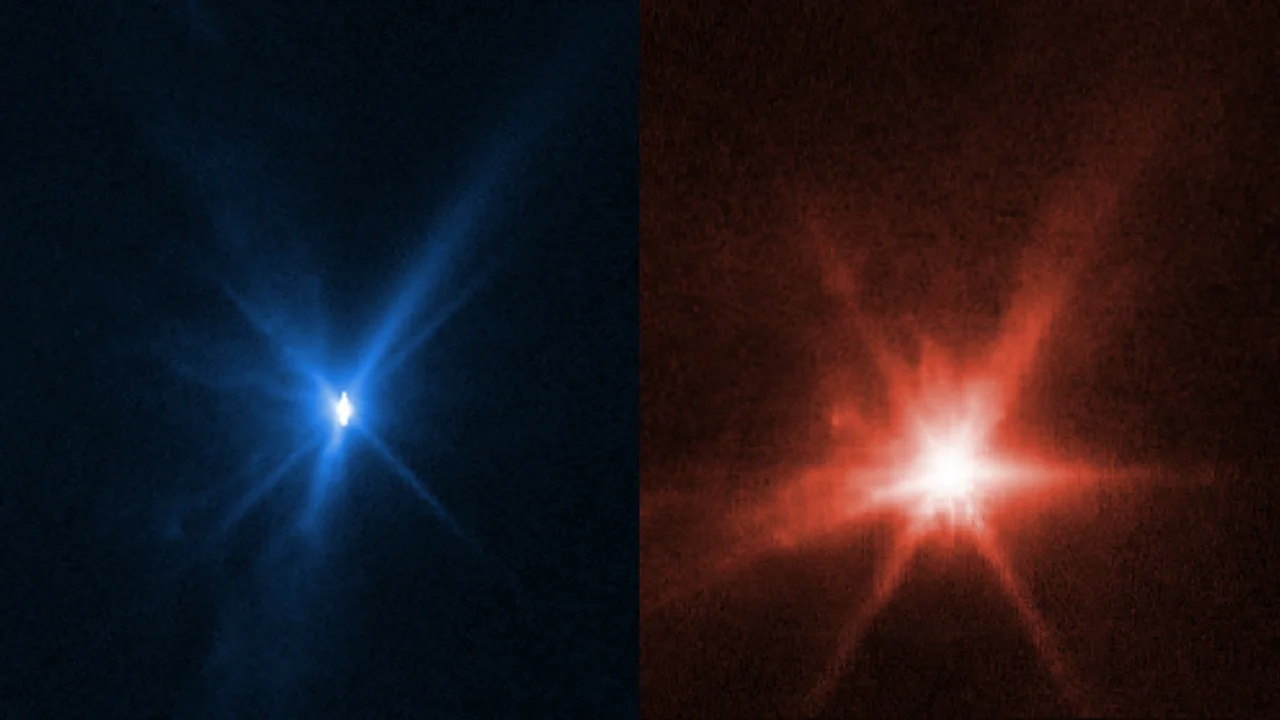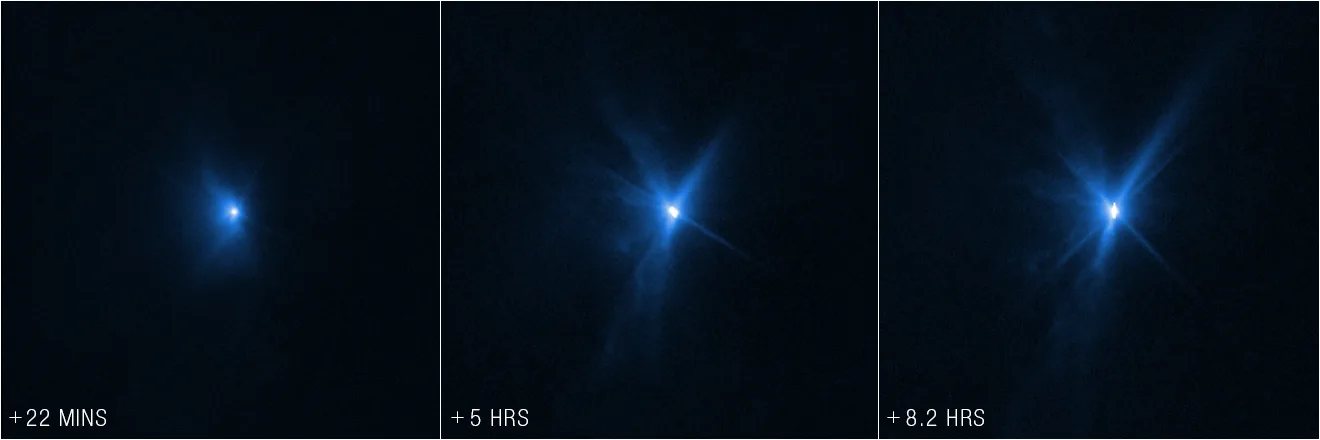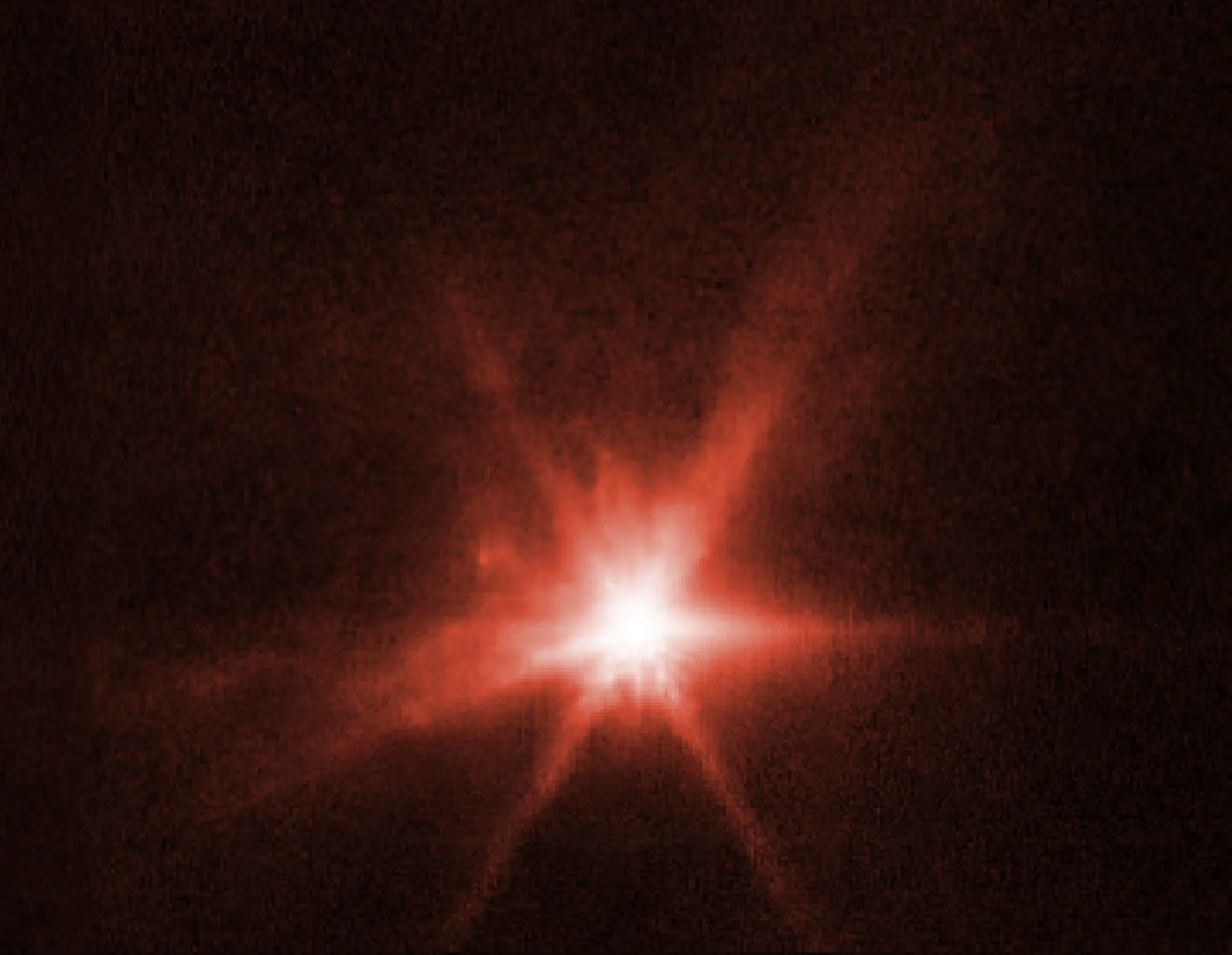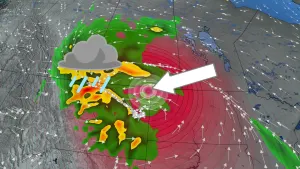
Pow! Immense debris cloud from DART impact spied by Hubble and JWST
"This is an unprecedented view of an unprecedented event."
Wow! New imagery from the Hubble and Webb space telescopes has captured the after-effects of NASA's DART spacecraft slamming into the asteroid moon Dimorphos, and they are pretty spectacular!
All eyes were tuned in to NASA TV on Monday night to witness NASA's Double Asteroid Redirection Test (DART) as it closed in on its target. At the same time, astronomers were watching that exact point in space through multiple telescopes, ready to see what happened after DART hit Dimorphos.
Two of the most famous telescopes ever built, the Hubble Space Telescope and the James Webb Space Telescope, were also pointed at Didymos and Dimorphos to capture the event.
"When I saw the data, I was literally speechless, stunned by the amazing detail of the ejecta that Hubble captured," Jian-Yang Li, a senior scientist at the Planetary Science Institute, who led the Hubble observations, said in a NASA press release. "I feel lucky to witness this moment and be part of the team that made this happen."

Three pictures taken by the Hubble Space Telescope, at 22 minutes, 5 hours, and 8.2 hours after NASA's Double Asteroid Redirection Test (DART) impacted Dimorphos. Credits: Science: NASA, ESA, Jian-Yang Li (PSI); image processing: Alyssa Pagan (STScI)
As shown in the images above, taken by Hubble, the cloud of debris blasted out by the impact is immense! With sunlight reflecting off of a much larger area of asteroid material, the astronomers estimate that it caused the total brightness of the Didymos system to triple over what it was before DART arrived!
--
RELATED: NASA successfully crashed DART into asteroid Dimorphos
--
"This is an unprecedented view of an unprecedented event," said Andy Rivkin, the lead investigator of the DART mission.
According to NASA: "The Hubble images show ejecta from the impact that appear as rays stretching out from the body of the asteroid. The bolder, fanned-out spike of ejecta to the left of the asteroid is in the general direction from which DART approached. These observations, when combined with data from NASA's James Webb Space Telescope, will allow scientists to gain knowledge about the nature of the surface of Dimorphos, how much material was ejected by the collision, how fast it was ejected, and the distribution of particle sizes in the expanding dust cloud."

This image from the James Webb Space Telescope's NIRCam instrument shows Dimorphos about 4 hours after NASA's Double Asteroid Redirection Test (DART) made impact. A tight, compact core and plumes of material appearing as wisps streaming away from the center of where the impact took place, are visible in the image. Those sharp points are Webb's distinctive eight diffraction spikes, an artifact of the telescope's structure. Credits: NASA, ESA, CSA, Cristina Thomas (Northern Arizona University), Ian Wong (NASA-GSFC), Joseph DePasquale (STScI)
WATCH: DART's mission is to intentionally crash into an asteroid
"Webb and Hubble show what we've always known to be true at NASA: We learn more when we work together," NASA Administrator Bill Nelson said in the statement. "For the first time, Webb and Hubble have simultaneously captured imagery from the same target in the cosmos: an asteroid that was impacted by a spacecraft after a seven-million-mile journey. All of humanity eagerly awaits the discoveries to come from Webb, Hubble, and our ground-based telescopes — about the DART mission and beyond."
From here, telescopes on Earth, as well as Hubble and Webb, will continue to monitor the Didymos system.

This infographic shows the intended consequences of DART's impact on Dimorphos — a change in the size of the asteroid moon's orbit, which will affect how long it takes to travel around larger Didymos. Credit: NASA/Johns Hopkins APL
They are looking for a specific change in the timing of Dimorphos' orbit around Didymos. It may take them days or perhaps even weeks of observations to confirm the results of this test.
The mission of DART is already a 100 per cent success. The spacecraft flew to the Didymos system, locked on to Dimorphos, and then flew straight into its target at top speed. That is what it was designed to do.
Now, it comes down to whether the impact had the desired effect.
If observations confirm that Dimorphos now takes less time to circle Didymos, they will have proven that we have the capability of changing the motion of a natural celestial body!
While no asteroids currently threaten Earth, having that capability could save us from any that become a danger to us in the future.










